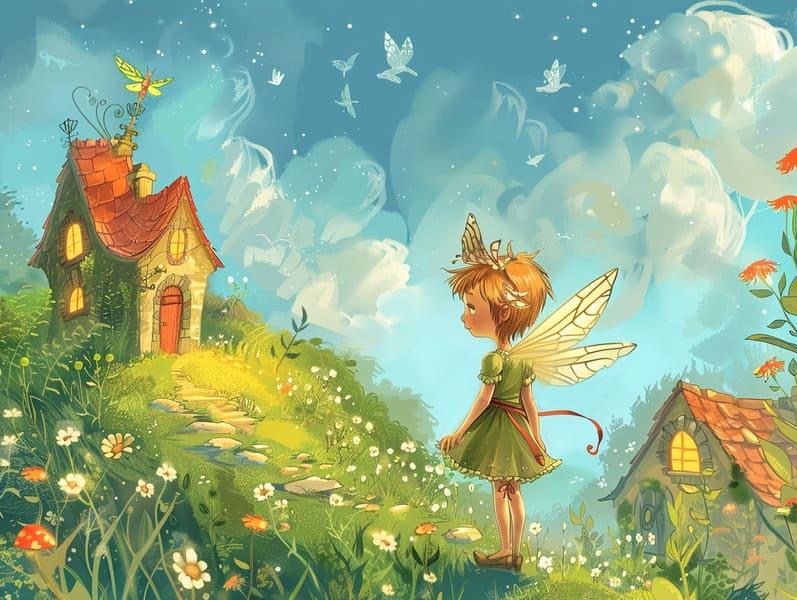The Evolution of Fairy Tales to Read and the Unceasing Captivation.
The Evolution of Fairy Tales to Read and the Unceasing Captivation.
Blog Article

Classic fairy tales have long histories. These stories have been whispered from one generation to the next centuries before they were ever inscribed. They developed from a variety of backgrounds, including American traditions. They were initially told among mature audiences, often carrying themes and messages mirroring the societal norms and beliefs of the time.
The renowned Brothers Grimm, Jacob and Wilhelm Grimm, were among the first to compile and release many of these beloved narratives. Their anthology, "Grimm's Fairy Stories," included narratives like "The Little Glass Slipper," "The Bread Crumb Trail," and "Snow-White and Rose-Red," which have since become essentials in the world of traditional fairy tales. Similarly, Hans Andersen's magical fairy tales, such as "The Sea Maid," and "The Duckling's Story," have won hearts worldwide, solidifying their place in the pantheon of beloved fairy tales.
Despite their ancient origins, fairy tales remain as relevant as ever, especially as kids' bedtime tales. These charming stories are now available in many formats, including richly illustrated books, charming animations, and online storybooks.
Their unwavering allure can be attributed to several charming aspects:
Significant Morals: Classic fairy tales often share important moral lessons. Narratives like "The Story of the Boy Who Cried Wolf" teach the virtue of truth, while "The Tale of the Tortoise and the Hare" point out the traits of persistence and humility. These tales offer little ones clear distinctions between right and wrong, guiding their moral compass in a kind yet lasting way.
Compassion and Knowledge: Traditional fairy tales frequently portray heroines facing problems and hurdles, encouraging readers to sympathize with their struggles and root for their triumphs. For instance, "The Story of Beauty and the Beast" reveals the significance of looking beyond appearances to appreciate the true being of a soul, strengthening compassion and understanding.
Cultural Awareness: Many timeless fairy tales are rooted in the cultural contexts from which they arose. Reading these tales can provide illuminating insights into different beliefs, enhancing a sense of cultural respect and acknowledgment.
Inventiveness and Imagination: The fanciful elements in fairy tales—spells and potions—engender children’s inventiveness. These narratives lead readers to extraordinary realms, stimulating creative dreams and a sense of amazement that endures a lifetime.
Old fairy tales are not only charming but also educational. They provide mesmerizing tools in fostering various thinking and feeling skills in children. When fairy tales are recited, they nurture language acquisition by introducing new language items and complex sentence structures. This practice also strengthens auditory skills and attentiveness, as the young focus on every detail, anxious to see what happens next.
Furthermore, talking about the themes and characters of traditional fairy tales can cultivate cognitive skills and problem-solving abilities. Young readers are guided to find patterns, forecast, and understand cause and effect. These deliberations also contribute to young ones convey their thoughts and feelings, enhancing their emotional intelligence.
In today’s digital age, the existence of online storybooks has made these stories more attainable than ever. Web-based platforms and digital apps offer comprehensive collections of Grimm's fairy tales that can be perused or played anytime, anywhere. Fairy tales told out loud are particularly popular, making available an immersive method for young ones to be a part of these mesmerizing stories. Read-aloud stories and read-aloud videos take characters and settings to life, often paired with charming musical scores and tunes that enrich the story adventure.
The enduring charm of classic fairy tales lies in their ability to alter to current times while staying true to their basic principles. Contemporary reinterpretations of these tales often bring in more varied protagonists and modern settings, making them relevant to today’s audience. However, the central morals of fortitude, kindheartedness, and fair-mindedness remain unchanged, continuing to touch audiences of all ages.
Classic fairy tales also offer a sense of calm and knownness. They distribute a well-structured narrative with a apparent beginning, middle, and end, often ending with the closure of conflicts and the triumph of virtue over corruption. This steadiness can be solacing for young readers, extending a sense of unchangeability in an constantly changing world.
Timeless fairy tales continue to delight and guide new generations, maintaining their allure and applicability in modern society. As nighttime stories for kids, they showcase a perfect blend of charm and understanding, enriching moral values, empathy, and creativity. The abundance of digital fairy tales and the sought after status of fairy tales voiced confirm that these timeless narratives remain attainable to new generations.
By maintaining and disseminating these tales, we continue to glorify the rich tapestry of narrative artistry and cultural heritage. Whether you are experiencing a artistically illustrated book, viewing a internet collection, or listening to an narrated book, the loveliness of old fairy tales is always within reach. These fairy tales show us of the unending spell of fairy tales and its ability to draw us together across time and space.
Be it you are exploring a vividly illustrated book, discovering a virtual collection, or listening on an sound book, the mystique of famous fairy tales is always within reach.
These fairy tales convey of the invariable influence of narratives and its website ability to gather us across centuries and lands, forging a link that enchants and educates alike.